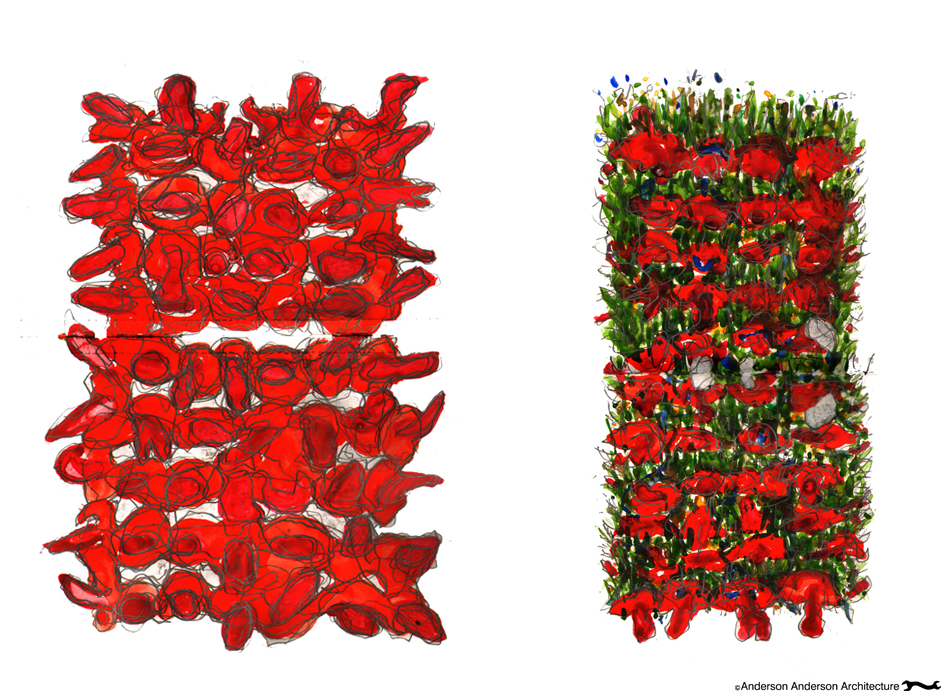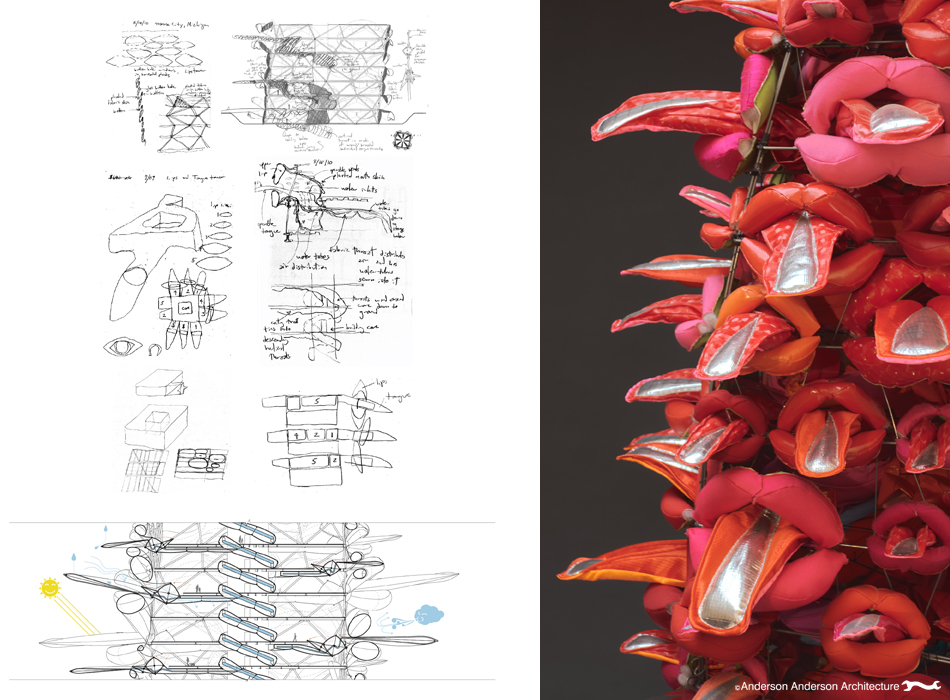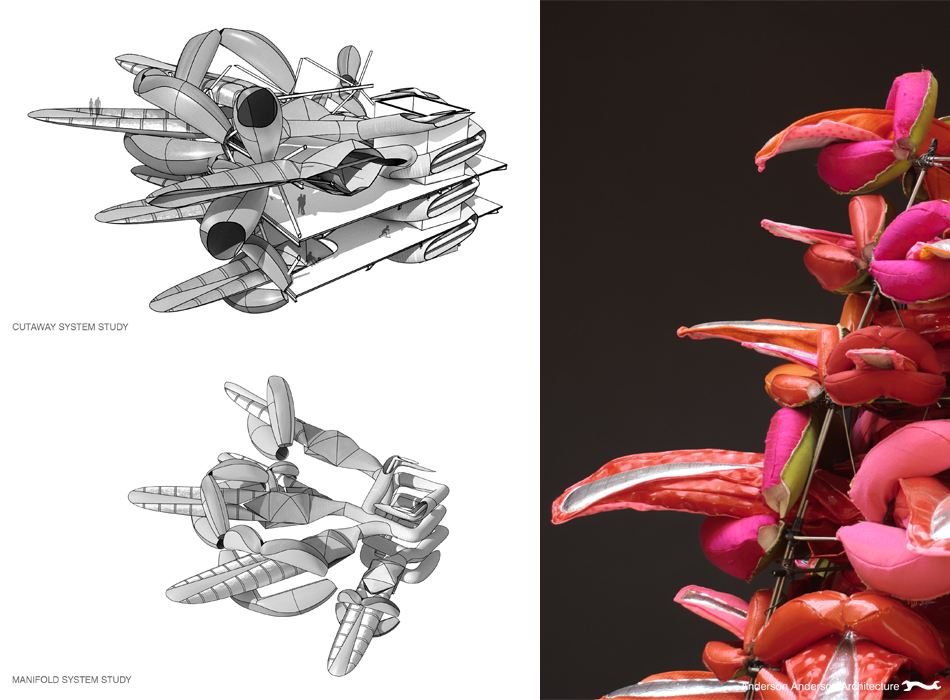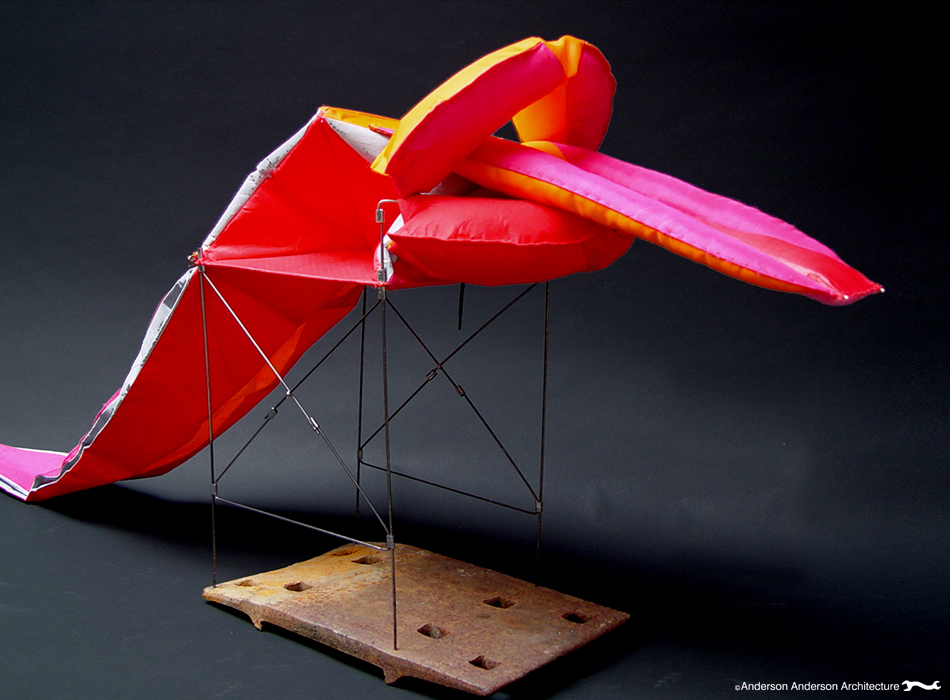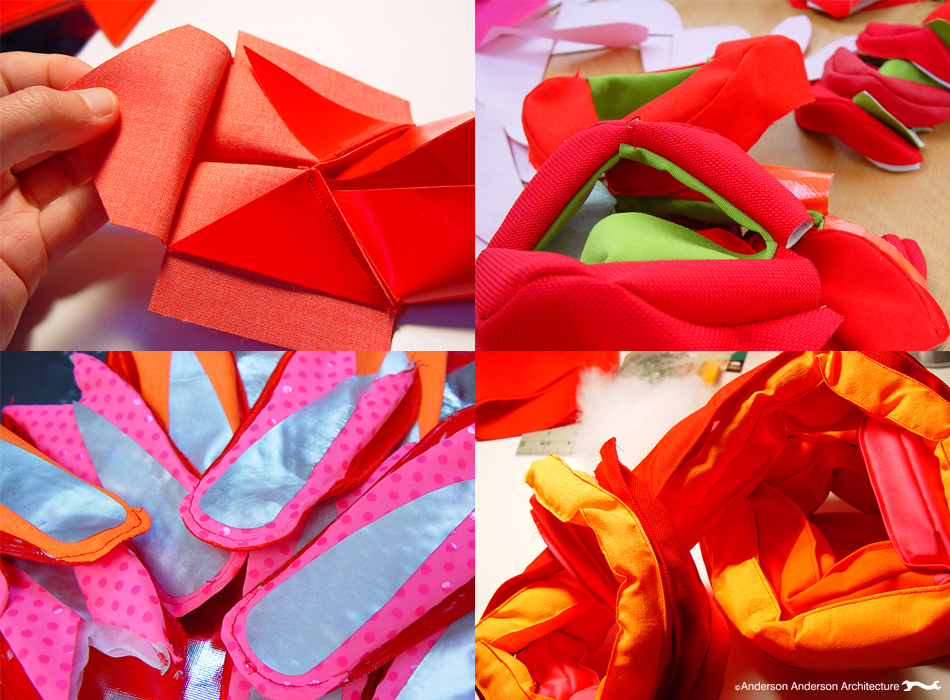LIPS TOWER
As fresh water resources rapidly diminish world wide, cities require new strategies for collecting, storing and distributing clean drinking water. This issue is most pressing in dense urban areas with limited available ground space, increasingly distant from secure and efficiently available natural aquifers. In most cities substantial energy resources are expended in routing and pumping distant water sources into urban areas. This long distance tapping of precious lake, river and ground water also exacerbates water rights disputes between cities, farmers, fishermen and advocates of environmental conservation. Beside the need to develop new sources of water, creating these sources locally will greatly reduce energy consumption, transport costs, evaporation and leakage losses, and reduce damage to natural eco-systems, landscapes, agricultural production and traditional rural culture and economies. Saving water and creating new alternative sources of water parallels and supports similar efforts in energy resource conservation and the development of local, low-impact energy production. Lips Tower addresses these issues as a proposal for a resource-efficient, high-rise office tower intertwined with water and energy harvesting and storage systems.
Lips Tower works as a thirsty urban utility sucking water and solar energy from the sky. Operable Teflon fabric lips open and close to modulate internal building temperatures with gentle airflows ducted past gravity fed circulating water coils into soft fabric windpipes cooling the building’s interior floor plates. As the sun circles the tower operable fabric tongues extend past their lips to expose photovoltaic skin while simultaneously shading the building face and preventing direct heat gain. As the sun moves on, tongues on shaded portions of the building retreat back into their lips, maximizing ambient work light for the building interior. On rainy days, on wet windward walls, tongues swell out to full extension, rising to gather raindrops into rivulets piped to water bladders banking gravity-battery potential energy, with surplus streams winding down around the building core, cooling the building and running into storage tanks and city water mains beneath the tower foundations. On foggy nights and cloudy humid days the tongues extend again with cool, tendriled skin to lick condensation from heavy, moisture-laden air.
The mechanism of these fabric machines is relatively simple and requires minimal energy. Micro-sensors on the building skin evaluate microclimate conditions and dictate optimal positioning of each operable utility element. The lips, tongues, internal throats, wind pipes and pleated building skins are all constructed of UV stabilized, Teflon-coated industrial fabrics with a projected useful life-span of forty tears, and are detailed for simple bolted installation and replacement. The lips and tongues are mechanized with interior bladders shaped and activated either by compressed air, or in some applications with hydrophilic, superabsorbent polymer packing, causing the pleated, hinged and folding skin panels to rise, fall, swell, contract, extend, shrink and retract as required to coordinate usefulness with localized atmospheric conditions. The top surface of the tongues is faced with flexible, fabric-adhered, photovoltaics. As the lips open and close, they draw with them the fabric building skin, to maintain a weather-tight seal. Accommodating this movement, the insulated skins are created of pleated fabric panels carrying elliptical windows in aluminum frames. The flexible fabric between the window panels allows the skin to hinge and bend along a horizontal arc. The vertical expansion and arcing is accommodated with horizontal pleats in the fabric, which also act as hoods or eyelids partially closing and shading the windows. As the lips open on warm days to maximize gasping intake of cooling air, the stress in the building skin is reduced, relaxing the pleats and hooding the windows at this moment when reduced daylight and reduced heat gain is most welcomed. When the lips close on cooler days to reduce air intake, the adjacent building skin tightens, arcs further outward to match the geometry of the lips, stretching the pleats and un-hooding the windows. This varied play of maximized utility acting in microclimate efficiency across the face and around the corners of the tower give substantial life and comprehensible narrative to a street view of the building dancing with its sky. Firmness. Commodity. Delight.
Why should architecture be any less than this? Kiss, kiss!
AWARD: 2011 American Institute of Architects, San Francisco Chapter, Honor Award for Lips Tower, urban water catchment and filtration, solar energy production infrastructure

